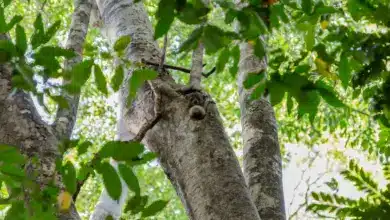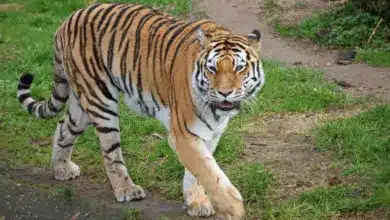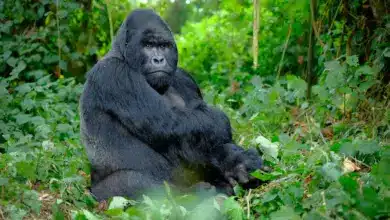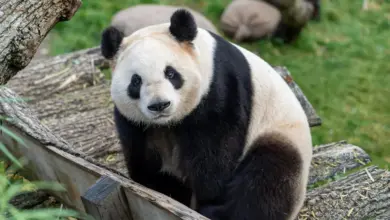Bonobo Handshake
Bonobo Handshake
BOOK REVIEW:
The Story Of An African Species On The Edge
BY PAUL GUERNSEY
Yes, I know, summer is half over. Still, if you’re a wildlife enthusiast, I’ve got a recommendation for a terrific summer reading experience. It’s terrific, that is, if you can handle a few tears mixed in with a fascinating and informative story. The book is Bonobo Handshake: A memoir of adventure and love in the Congo, by a young Australian woman named Vanessa Woods. Published in hardcover to wonderful reviews in 2010, Bonobo Handshake came out last month in a trade paperback edition from Gotham Books.
Woods’ book is at once a very personal account of her time in Africa—in fact, when I first picked it up, the subtitle made me suspicious that it might not be my kind of book—as well as the larger, at times heartbreaking, story of an extremely appealing species of ape that is facing extinction.
Bonobos, you may already know, inhabit a single, though fairly large, area of central Congo, a vast and wore-torn African nation where little ever seems to go right, either for people or for wildlife. There are perhaps 30,000 to 50,000 bonobos remaining, and the numbers are steadily going down due to habitat loss in the form of voracious logging and mineral exploitation in the rain forest, as well as to hunting by humans, who eat adult bonobos and sell any surviving babies as “pets”—a commerce that is illegal even in Congo, though often it is not enforced. Confiscated bonobo babies are sent to a rehabilitation facility in the Congolese countryside—and that is where Woods takes her readers as well, but only after telling us about some of her earlier adventures “rehabilitating” monkeys, falling in love with and marrying Brian Hare, an American primatologist and chimpanzee specialist, and accompanying him first to a chimp rehab center, and finally to Congo’s Lola Ya Bonobo facility.
Once she’s at Lola Ya Bonobo, Woods, a writer rather than a scientist, must find a purpose for herself while her husband is devising experiments to determine what, exactly, goes on inside the mind of humankind’s closest living relative. Soon enough she does; in a number of extremely humorous passages, she describes how she becomes indispensable to Hare as an expert practitioner of the “bonobo handshake” of the book’s title, an affectionate gesture that male bonobos invariably demand before agreeing to participate in any of the tests that Hare wants them to take. At the same time, the author must also earn the respect of the Congolese women who raise and care for the orphaned bonobos—something that she accomplishes only after much perseverance, along with a number of well-meaning blunders and cross-cultural communication problems.
Throughout her book, Woods provides many touching and frequently heartrending portraits of individual bonobos—and they all are, seemingly to the same degree as humans, individuals, as the author very clearly shows us. To Woods’ great credit, however, she spends almost as much time on Congo’s human story, which is a seemingly never-ending tale of tragedy, greed, bloodshed—and no small amount of personal heroism in the face of extreme adversity. Along with accounts of bonobo lives, she also tells us about a number of ordinary Congolese people—often survivors or witnesses of shocking violence—whom she has made a great effort to know and to learn about. She relates it all with great skill, and much compassion.
An important theme of Bonobo Handshake has to do with the differences between bonobos and chimpanzees. While the two apes look very much alike—scientists disagree about whether bonobos are a chimpanzee subspecies, or a separate species entirely—the similarities seem to end with appearances. Chimps, though also an Endangered species, are more numerous, and live in several different areas across a number of African countries, and are therefore less vulnerable to human-induced cataclysms in the Congo.
However, the main distinctions have to do with behavior. Most people have heard, more or less accurately, that bonobos are “lovers,” while chimps are “fighters,” but that’s only part of the story.
Among chimpanzees, adult males are—there’s no way around it—nasty brutes. They intimidate, and often beat, females and weaker males within their own group, relentlessly hunt down colobus monkeys and devour them alive, and, as primatologist Jane Goodall famously reported, they even wage war war on neighboring tribes, savagely mauling and beating to death any lone, neighboring male they are able to stalk and surround. In addition, one of Brian Hare’s findings in his work with chimps was that they will usually cooperate to acquire food only when they’re certain of getting a share; during experiments in which a chimp has the option of helping another chimp gather a reward, with no direct benefit to himself, chimps most often opt not to help.
Bonobo groups, on the other hand, do not fight other families. They are ruled by females, and, if a male tries to throw his weight around, he’s often humiliatingly “corrected” by the ladies. Unlike tiny chimpanzees, baby bonobos get the choicest food, and an adult male bonobo will peacefully eat from the same bowl as a juvenile—whereas among chimps, the juvenile would get a beating just for thinking about eating from that bowl. In addition, in Hare’s cooperation experiments, bonobos generally will help other bonobos for no other reason than to be helpful—in other words, they are truly altruistic, which is a very rare behavior in the animal world.
I certainly hope these rare and special animals can continue to survive in the wild.
By the way, Vanessa Woods has a Bonobo Handshake website; if you’re looking for further information on the author and her work, that’s the place to go. She also provides links to places like Amazon.com and Barnes & Noble, where you can buy her book.
But, why not try your local bookstore first? We need bookstores, and they won’t be around much longer unless we support them . . . .



